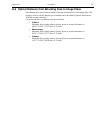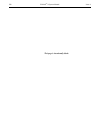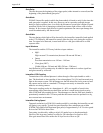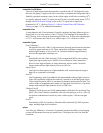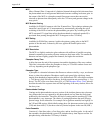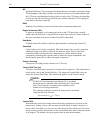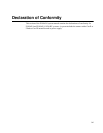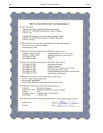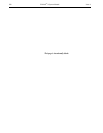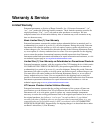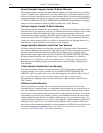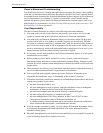
304 PI-MAX
®
4 System Manual Issue 4
QE
Quantum Efficiency. The percentage of incident photons converted to electronic charge.
The throughput of the input windows, the spectral sensitivity of the photocathode and
the CCD array, the illuminated surface (front or back) of the CCD array, the intensifier
on/off ratio, the MCP resolution, the MCP gain, and the intensifier-CCD coupling all
contribute to the total system QE.
RAM
Random Access Memory used to store data such as experiment parameters.
Region of Interest (ROI)
A square or rectangular set of contiguous pixels on the CCD array that is usually
smaller than the full frame. Using an ROI to acquire data results in a faster readout of
the array since data from pixels outside of that ROI is discarded.
Safe Mode
PI-MAX4 intensifier mode in which the photocathode is continuously biased off.
Saturation
Caused when a pixel well is completely filled with charge. Once a pixel is saturated,
additional charge will spillover (bloom) into adjacent pixels. Ways to deal with
saturation include lowering the array temperature (to reduce the dark charge
component,) shortening the exposure time (to reduce the signal component,) and
decreasing the gain (also to reduce the signal component.)
Scan or Scanning
The process of reading out the contents of a CCD array.
Vertical Shift Time (µs)
The time, in microseconds, required to vertically shift a single row. This information is
based on the value in the Vertical Shift box. The larger the Vertical Shift value, the
longer the Vertical Shift Time. This information appears for the Frame Transfer.
NOTE:
PI-MAX4: EM cameras have an inherent 2.4 s overhead
delay that must be included when calculating the Vertical Shift
time. This overhead is a constant value regardless of the
number of rows being transferred.
The total time required to transfer an image may be calculated
using the following formula:
[(# of rows) x (t
VS
)] + 2.4 s
Vertical Shift
Determines the speed of the image transfer from the exposed area of an array to the
masked area. Setting a lower value increases the shift speed. A higher value gives a
slower shift. If the shift is too fast, not all of the charge will be transferred. If too slow,
image smearing will be increased due to the exposure that takes place while the transfer
is in progress. The default value gives good results in most measurements.




